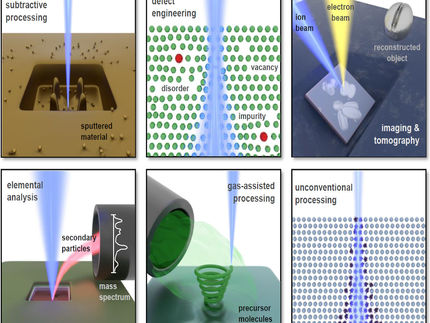North American Center for Research on Advanced Materials to continue for another five years
Expanded focus on digitalization and start-up companies
At a conference marking the five-year anniversary of the North American Center for Research on Advanced Materials (NORA), the center’s members convened to discuss the outcomes of the research alliance to date as well as future areas of focus, including bioscience and catalysis research, digitalization and working with start-up organizations. NORA was established by BASF, Harvard University, the Massachusetts Institute of Technology (MIT), and the University of Massachusetts (UMass) Amherst. At the anniversary event in Cambridge, Massachusetts, the extension of NORA for another five years was officially announced.
“BASF, Harvard, MIT and UMass Amherst have engaged in an interdisciplinary approach to research. Together, we develop next generation technologies to help solve the most demanding materials, chemistry and biology-related challenges,” said Dr. Martin Brudermüller, Vice Chairman of the Board of Executive Directors and Chief Technology Officer at BASF. “To significantly advance our research, we will focus on digitalization and explore the potential of working with start-ups in the Boston area’s dynamic technology ecosystem.”
To accelerate its development of digitalization in R&D, BASF announced at the conference its membership in Systems That Learn (STL), a research initiative that is part of the MIT Computer Science and Artificial Intelligence Laboratory (CSAIL). STL aims to accelerate the development, deployment and evolution of large-scale software systems that incorporate machine learning and artificial intelligence (AI). Membership will provide BASF access to cutting-edge research in AI, machine learning and data analytics, early access to new tools and close interaction with CSAIL researchers.
Significant progress in field of structured materials
In recent years, the NORA initiative has led to significant advancements in the field of structured materials. Nature has perfected such materials, for instance, Balsa wood – a prominent example of lightweight materials, balancing low weight and remarkable strength. A joint effort of BASF and MIT, Professors Lorna Gibson and Markus Buehler used a combination of experimental techniques and computer simulation to reveal more insights into the structure of Balsa wood – from macroscopic specimens, to the level of the cellular structure of the wood, down to chemical details at the atomic scale. In looking at the smallest details, it was determined that the wood’s strength comes from cellulosic fibers reinforcing the walls in the cellular structure in a specific geometrical arrangement.
Once this principle was discovered, the NORA team created composite materials based on the characteristics of Balsa wood. Together with Professor Ryan Hayward from UMass Amherst, researchers mimicked the smallest elongated cellular structures in polymeric foams. A collaboration with Professor Jennifer Lewis’ group at Harvard used 3D printing techniques to print honeycomb cellular structures from epoxy resins, which contained reinforcing fibers in the cell walls, just like Balsa.
“Interactions with BASF have brought new challenges to our academic community that evolve as we explore new directions in science and technology,” said David Weitz, Mallinckrodt Professor of Physics and of Applied Physics in the Harvard John A. Paulson School of Engineering and Applied Sciences. “One of the key benefits of NORA is that it provides an outlet for the creativity of local scientists to have an impact on applied research.”
The NORA collaboration has also advanced tools and learnings that are being incorporated into several internal BASF projects. “As we look to the next five years, understanding and controlling structures of materials at all length scales will remain a focus area and an interdisciplinary effort at NORA, considering novel applications in chemical catalysis, materials for biological systems or exploring physical interactions in advanced and totally new materials, such as metamaterials,” said Dr. Peter Eckes, President of Bioscience Research and North America Research Representative at BASF. “We look forward to extending our co-creation efforts with our academic partners.”
Most read news
Topics
Organizations
Other news from the department science

Get the chemical industry in your inbox
By submitting this form you agree that LUMITOS AG will send you the newsletter(s) selected above by email. Your data will not be passed on to third parties. Your data will be stored and processed in accordance with our data protection regulations. LUMITOS may contact you by email for the purpose of advertising or market and opinion surveys. You can revoke your consent at any time without giving reasons to LUMITOS AG, Ernst-Augustin-Str. 2, 12489 Berlin, Germany or by e-mail at revoke@lumitos.com with effect for the future. In addition, each email contains a link to unsubscribe from the corresponding newsletter.
Most read news
More news from our other portals
Something is happening in the chemical industry ...
This is what true pioneering spirit looks like: Plenty of innovative start-ups are bringing fresh ideas, lifeblood and entrepreneurial spirit to change tomorrow's world for the better. Immerse yourself in the world of these young companies and take the opportunity to get in touch with the founders.

























































